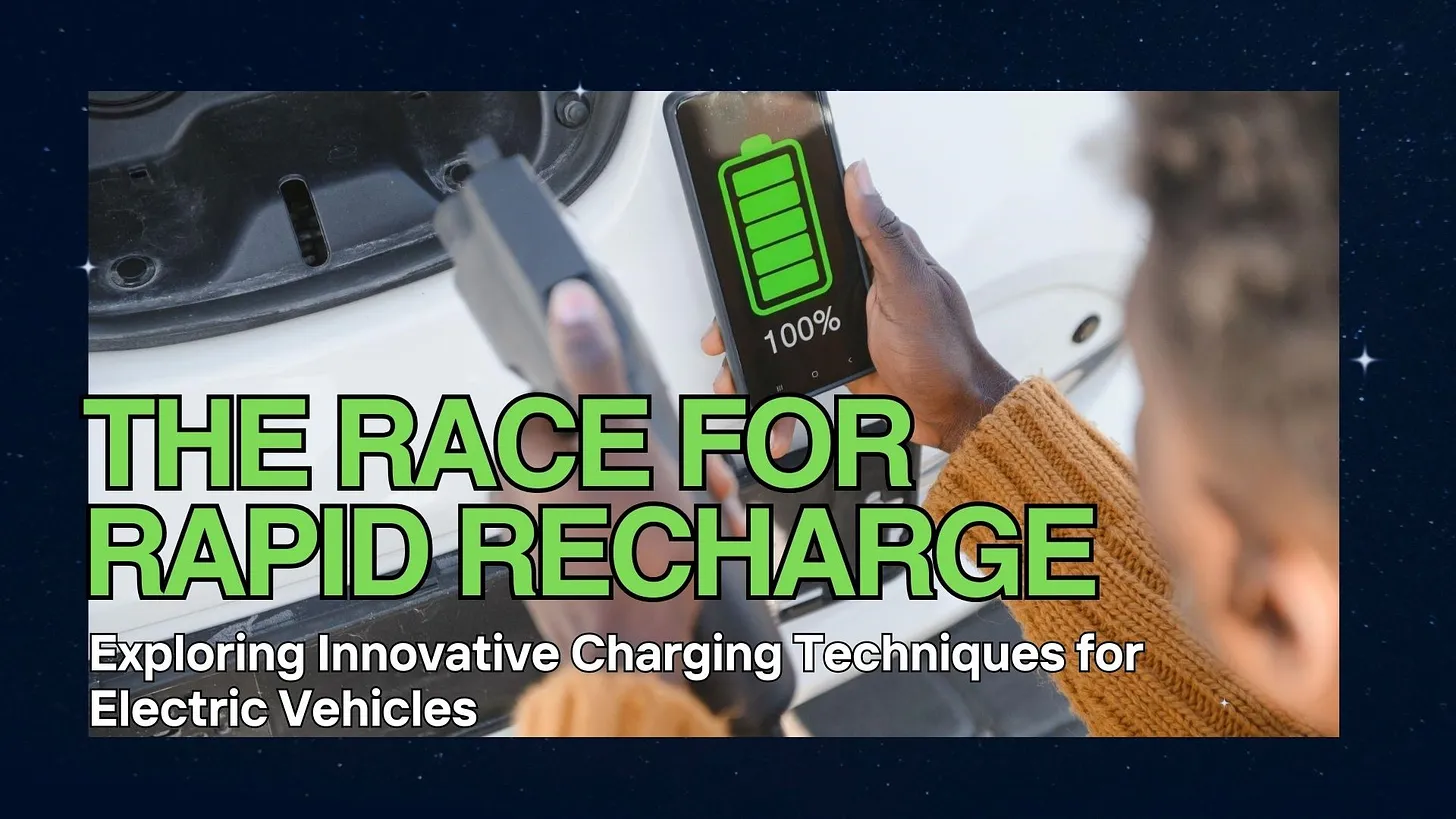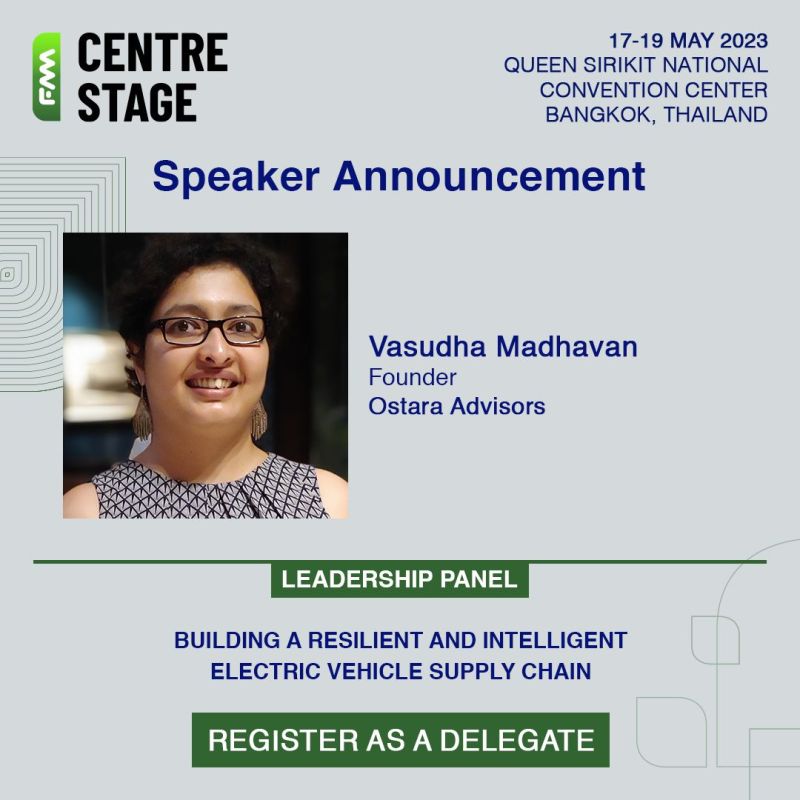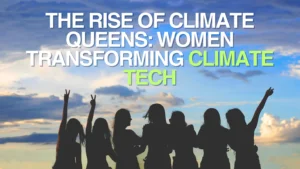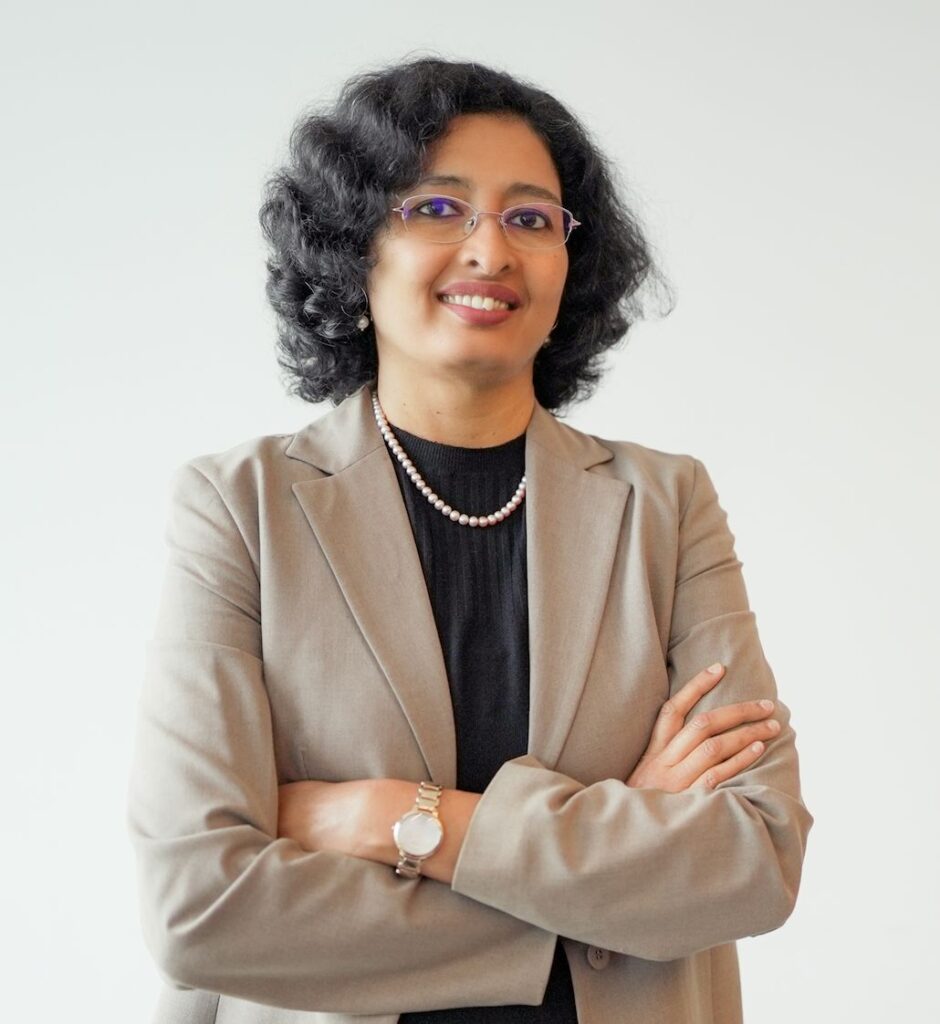In recent years, lithium-ion batteries (LIBs) have revolutionized the way we power our devices and vehicles. However, the more we charge them quickly, the faster they degrade, eventually needing replacement. To combat this, various fast charging methods are being developed, each with its own benefits and challenges.
The ABCs: Battery Charging Basics
A lithium-ion battery is composed of 1) the anode and the cathode; 2) a separator between the two electrodes; and 3) an electrolyte that fills the remaining space of the battery. During charging, lithium ions move from the cathode to the anode through the electrolyte, as the charger passes current into the cells. Several key parameters are monitored and controlled during the charging process:
Current (I): Current is the rate at which electric charge flows through a circuit. It is measured in Amperes (A). In battery charging, the current determines how quickly the battery charges.
Voltage (V): Voltage is the electrical potential difference between two points in a circuit. It is measured in Volts (V). Voltage determines the force that drives current through the battery during charging.
Power (P): Power is the rate at which work is done or energy is transferred. In battery charging, power is the product of current and voltage (P = I × V). It indicates how quickly energy is transferred to the battery.
C-rate: The C-rate is a measure of the rate at which a battery is charged or discharged relative to its capacity. A C-rate of 1C means the battery is charged or discharged in 1 hour. For example, a 1C charge for a 1000 mAh battery is 1000 mA (1A). Higher C-rates indicate faster charging or discharging.
State of Charge (SoC): State of Charge is the level of energy remaining in the battery, expressed as a percentage of its fully charged capacity. It is used to determine how much charge the battery can still accept.
Commonly used Charging Methods
Constant Current-Constant Voltage (CC-CV): This is the most common charging method used today. It involves charging the battery at a constant current until it reaches a specified voltage, at which point the charger switches to a constant voltage mode. The battery is then charged at this constant voltage until the current drops to a low level, indicating that the battery is fully charged. CC-CV charging typically takes between 30 minutes to 2 hours for a full charge, depending on the battery chemistry and design. One of the main benefits of CC-CV charging is that it allows for a more complete charge of the battery, which can extend its overall lifespan.
Constant Power-Constant Voltage (CP-CV): This method is similar to CC-CV charging, but instead of using a constant current, it uses a constant power to charge the battery. This means that as the battery’s voltage increases during charging, the current decreases to maintain a constant power level. CP-CV charging has been shown to result in better capacity retention compared to CC-CV charging, especially at higher charging rates.
Multistage Constant Current (MCC): This charging method seeks to mitigate battery degradation from fast charging by limiting the higher C-rate charging to a reduced state of charge (SOC) window. It consists of multiple CC stages followed by a CV stage, with higher currents applied at lower SOC’s. For example, a C-rate of 1.5C to 3C might be applied for only a few minutes at low SOC’s before the current is reduced to less than 1C for the remainder of the charge. This approach seeks to reduce heat generation and avoid conditions that enable lithium plating and other modes of degradation. MCC charging can help extend the lifespan of the battery while still allowing for relatively fast charging times.
Extending Battery Life: Pulse charging and other innovative methods
Boost Charging: Boost charging supplies high current at the beginning, then switches to lower currents for the remainder. The overall profile may resemble CV-CC-CV or CC-CV-CC-CV. The results from boost charging compared to CC-CV methods are not conclusive, with some protocols able to reduce charging time in exchange for higher capacity fade.
Variable Current Profiles (VCP): VCP uses different current profiles to reduce charging time and energy losses. One example, the universal voltage protocol (UVP), was derived by optimizing a set of CC-CV curves and is designed to reduce both charging time and energy losses due to heating. However, long-term aging cycling effects still need further investigation.
The different charging methods are depicted below:
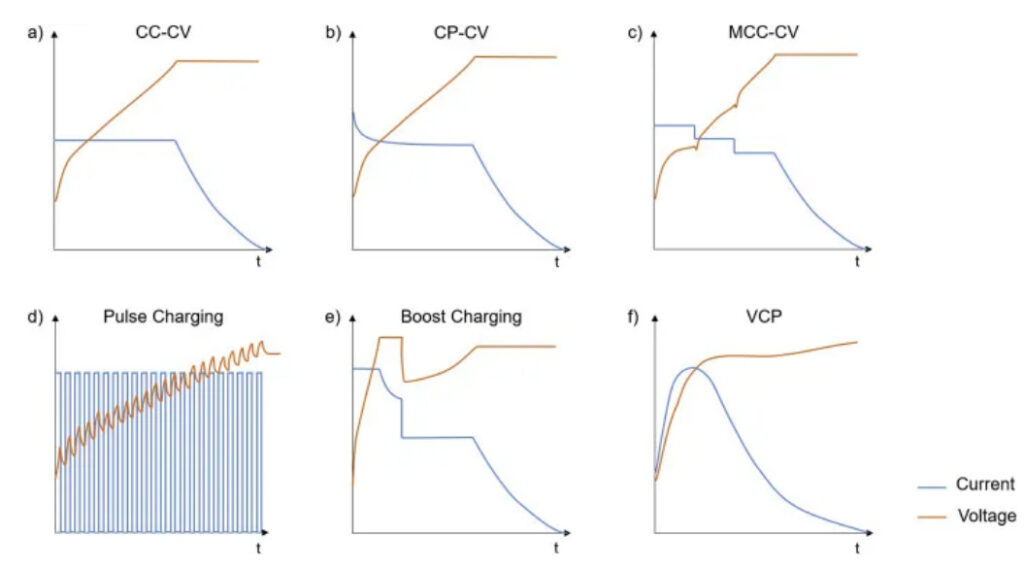

Pulse Charging: How it works
Pulse charging can be used to speed up the charging of lithium-ion batteries while preserving their longevity. It involves delivering high-current pulses to the battery, separated by short breaks or low-current periods. This approach helps prevent issues like dendrite growth and improves the battery’s overall efficiency.
The pulse charging process typically includes setting parameters such as the frequency (how often the pulses occur), pulse width (duration of each pulse), and relaxation period (break between pulses). These parameters can vary depending on the specific application but are crucial for optimizing the charging process.
Key benefits:
During pulse charging, the battery experiences less heat buildup compared to continuous charging, which can help extend its lifespan. It’s important to note that while pulse charging can reduce charging times, a longer constant voltage (CV) phase is still necessary to fully charge the battery and access its maximum capacity. Pulse charging can reduce the charging time by 5–20% with no significant impact on cycle life.
Challenges for Electric Vehicles: Overcoming the Roadblocks
Heat Generation: Fast charging can generate heat, which can be detrimental to the battery’s lifespan if not managed properly.
Battery Degradation: Even with fast charging innovations, there is still a risk of battery degradation over time, especially with higher current charging methods.
Infrastructure: Implementing fast charging technology requires significant infrastructure upgrades to support high-power charging stations.
Benefits of Fast Charging Innovations: Charging Ahead with Speed and Efficiency
Reduced Charging Time: Fast charging methods can significantly reduce the time required to charge a battery, making electric vehicles more convenient for users.
Extended Battery Lifespan: By minimizing degradation, these methods can help extend the overall lifespan of the battery, reducing the need for frequent replacements.
Compatibility with Different Battery Chemistries: Fast charging innovations can be adapted to work with different types of battery chemistries, making them versatile for various applications.
Sparks of Innovation: Startups Revolutionizing Electric Vehicle Charging
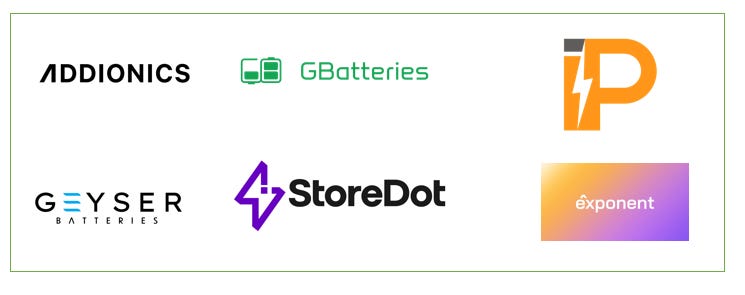

While fast charging innovations show promise in reducing charging times and extending battery lifespan, they are still facing challenges that need to be addressed. Continued research and development in this area are crucial for the widespread adoption of electric vehicles. By understanding the benefits and challenges of these technologies, we can work towards a future where electric vehicles are charged quickly, efficiently, and sustainably.
Ostara in the News
1. Even as India reduced customs duty on imports of EVs priced at $35,000 and above from 100% to 15% for upto 8000 EVs imported a year per OEM, subject to certain conditions, we spoke to the Economic Times on April 7, 2024, and shared our views on the Luxury EV market in India. Full article here.
2. Having tracked the Electric Motorcycle space in India and globally for a few years, we were happy to share our views with The Economic Times on the emergence of this space in India and key players here. See the Full article published on April 14, 2024, here.


3. Vasudha Madhavan was invited to speak at the ConEVersations-On-Mobility hosted by Magenta Mobility alongside Amitabh Saran, CEO of Altigreen; Nikhil Nair, CEO of Ohm Mobility; and Maxson Lewis, CEO of Magenta Mobility.Follow Ostara Advisors to stay updated with the latest trends related to Electric Vehicles, Innovation and Sustainability from India and around the globe.Sources:a. An Introduction to Fast Charging and Pulse Charging | by BatteryBits Editors | BatteryBits (Volta Foundation) | Mediumb. Electronics | Free Full-Text | Evaluation of Charging Methods for Lithium-Ion Batteries (mdpi.com)c. 5 Top Fast Charging Battery Startups Impacting Energy (startus-insights.com)
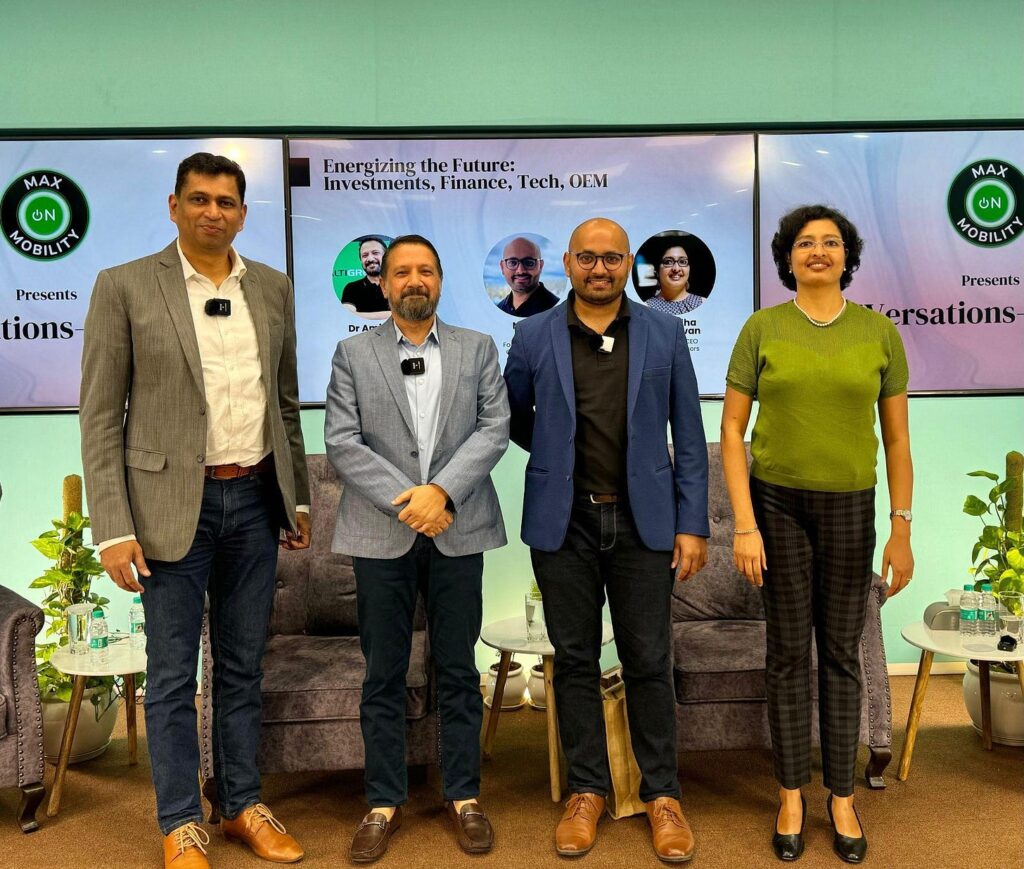

Follow Ostara Advisors to stay updated with the latest trends related to Electric Vehicles, Innovation and Sustainability from India and around the globe.
Sources:
b. Electronics | Free Full-Text | Evaluation of Charging Methods for Lithium-Ion Batteries (mdpi.com)
c. 5 Top Fast Charging Battery Startups Impacting Energy (startus-insights.com)

